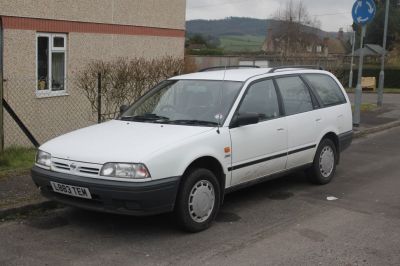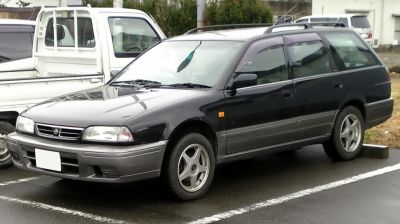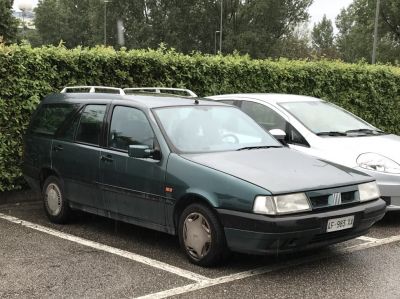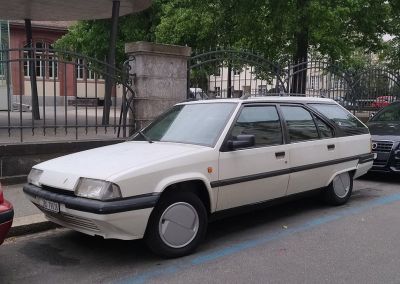 1969 Dacia 1300 Combi Dimensions, Size & Specs
1969 Dacia 1300 Combi Dimensions, Size & Specs
Measurements of the 1969 Dacia 1300 Combi, engineered for optimal performance and comfort
| Dimensions | |
|---|---|
| Length: | 4410 mm173.6 in14.5 ft |
| Width: | 1635 mm64.4 in5.4 ft |
| Height: | 1435 mm56.5 in4.7 ft |
The Dacia 1300 Combi is a classic station wagon produced by Romanian automaker Dacia from 1969 until 2004. Based on the platform of the Dacia 1300 sedan, the Combi version offers a practical and spacious wagon body style favored for family and utility use across several decades. Measuring 4410 mm (173.6 inches) in length, 1635 mm (64.4 inches) in width, and 1435 mm (56.5 inches) in height, the Dacia 1300 Combi presents a compact yet roomy footprint for its era. This vehicle's dimensions place it within the smaller segment of station wagons, making it well-suited for urban driving and maneuverability, while maintaining ample cargo and passenger space. Its modest height contributes to a relatively low center of gravity, aiding stability on the road. Known for its simple, robust design and straightforward engineering, the 1300 Combi became a staple of Eastern European roads and a symbol of practical motoring during its long production run. Today, it remains a vintage favorite among classic car enthusiasts seeking a piece of automotive history with functional wagon proportions. The combination of its size, historical significance, and extended availability ensures the Dacia 1300 Combi holds an important place in the lineage of compact station wagons.
Discover the standout features that make the 1969 Dacia 1300 Combi a leader in its class
Have a question? Please check our knowledgebase first.
The Dacia 1300 Combi has a length of 4410 mm (173.6 inches), a width of 1635 mm (64.4 inches), and a height of 1435 mm (56.5 inches). These dimensions make it a relatively compact station wagon suitable for everyday urban driving and moderate cargo capacity.
At 1635 mm (64.4 inches) wide, the Dacia 1300 Combi was on the narrower side compared to many other station wagons from the late 1960s and 1970s. This narrower width made it easier to maneuver and park in tight urban environments, especially when compared with larger Western European station wagons of the same period that often exceeded 1700 mm (67 inches) in width.
While precise cargo volume specifications for the Dacia 1300 Combi are not widely documented, as a station wagon derived from the Dacia 1300 sedan, it offered a practical rear cargo area with folding rear seats to maximize utility. The car's relatively compact exterior dimensions imply moderate cargo space suitable for everyday family needs or light hauling.
The Dacia 1300 models generally featured lightweight construction to keep costs and fuel consumption down. Though specific weight data for the Combi version is less commonly cited, it's understood to be relatively light compared to modern station wagons, offering improved fuel economy and easier handling but limited by today's comfort and safety standards.
The Dacia 1300 Combi stands at 1435 mm (56.5 inches) tall. This moderate height provides sufficient headroom for average adult passengers while maintaining a low overall profile to improve aerodynamic efficiency. The height is typical for station wagons of this class and era, balancing interior space and external compactness.
The wheelbase of the Dacia 1300 platform is approximately 2445 mm (96.3 inches), consistent with the sedan version, which the Combi shares. A wheelbase of this length offers a good compromise between maneuverability and ride comfort, providing stable handling while ensuring the wagon remains agile in urban environments.
Yes, with a length of 4410 mm (173.6 inches), width of 1635 mm (64.4 inches), and height of 1435 mm (56.5 inches), the Dacia 1300 Combi comfortably fits into a typical residential garage. Most standard garages have dimensions of at least 2.4 meters (8 feet) wide and 4.8 to 6 meters (16 to 20 feet) deep, so parking the Dacia 1300 Combi inside should not present any issues.
The Dacia 1300 Combi shares much of its dimension footprint with the standard 1300 sedan. The major difference is in height and rear overhang due to its station wagon design to accommodate a larger cargo area. Length and width remain very similar, with the Combi focusing on practicality and versatility over the sedan's more passenger-oriented layout.
Comparatively, the Dacia 1300 Combi is smaller than many Western European station wagons of the era, such as the Opel Rekord Caravan or Ford Taunus Estate, which were often longer and wider. However, its compact size made it practical for Eastern European roads and city conditions. It provides basic utility and cargo space without the larger, heavier build found in Western models, aligning with the needs and budget of its target market.
The Dacia 1300 Combi was known for its rugged and simple mechanical construction, which made it relatively easy to maintain and repair. Its long production span from 1969 to 2004 is a testament to its reliability and favorable market acceptance, particularly in Eastern Europe. Though its technology became outdated by the 1990s, the car remained a practical choice for many due to its affordability, parts availability, and functional design.
Discover similar sized cars.

| Production: | 1990-1998 |
|---|---|
| Model Year: | 1990 |
| Length: | 4460 mm175.6 in |
| Width: | 1695 mm66.7 in |
| Height: | 1500 mm59.1 in |

| Production: | 1991-1998 |
|---|---|
| Model Year: | 1991 |
| Length: | 4460 mm175.6 in |
| Width: | 1695 mm66.7 in |
| Height: | 1490 mm58.7 in |

| Production: | 1990-2001 |
|---|---|
| Model Year: | 1990 |
| Length: | 4472 mm176.1 in |
| Width: | 1695 mm66.7 in |
| Height: | 1500 mm59.1 in |

| Production: | 1990-1996 |
|---|---|
| Model Year: | 1990 |
| Length: | 4472 mm176.1 in |
| Width: | 1695 mm66.7 in |
| Height: | 1500-1540 mm59.1-60.6 in |

| Model Year: | 1986 |
|---|---|
| Length: | 4399 mm173.2 in |
| Width: | 1650-1660 mm65.0-65.4 in |
| Height: | 1431 mm56.3 in |

| Production: | 1983-2006 |
|---|---|
| Model Year: | 1984 |
| Length: | 4391-4410 mm172.9-173.6 in |
| Width: | 1615-1660 mm63.6-65.4 in |
| Height: | 1460 mm57.5 in |

| Production: | 1984-1998 |
|---|---|
| Model Year: | 1985 |
| Length: | 4404 mm173.4 in |
| Width: | 1636 mm64.4 in |
| Height: | 1455 mm57.3 in |
